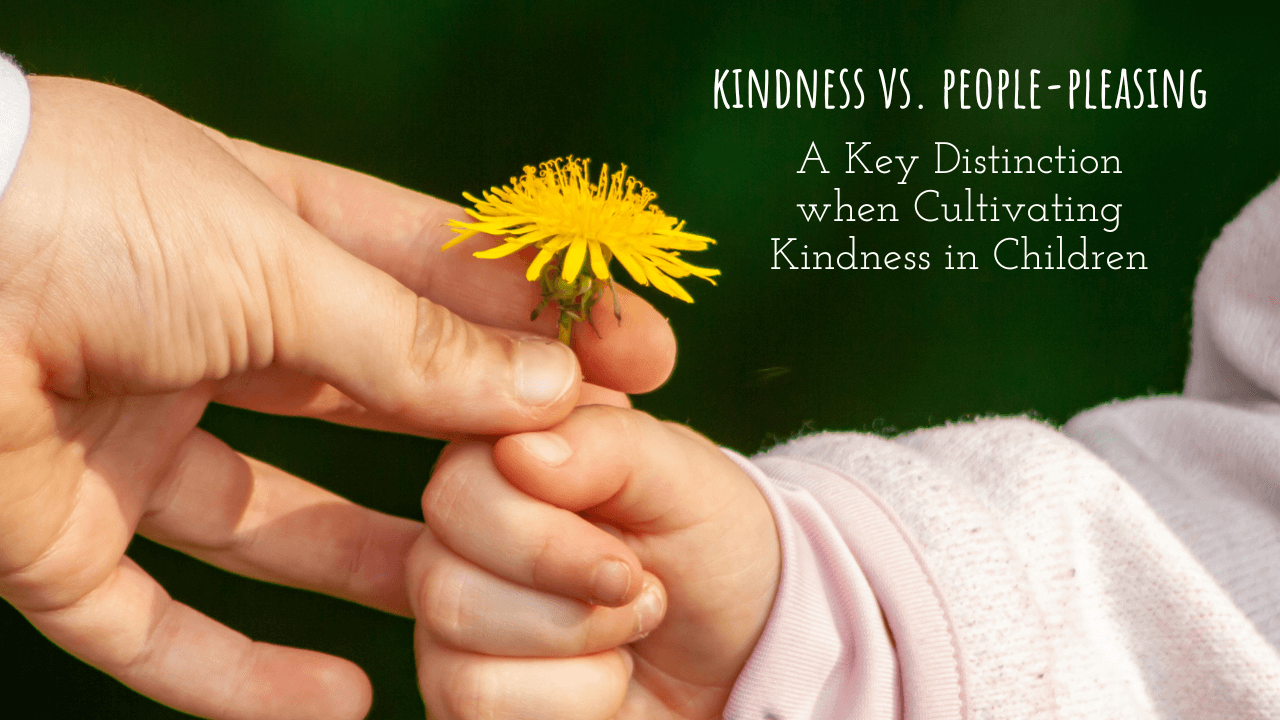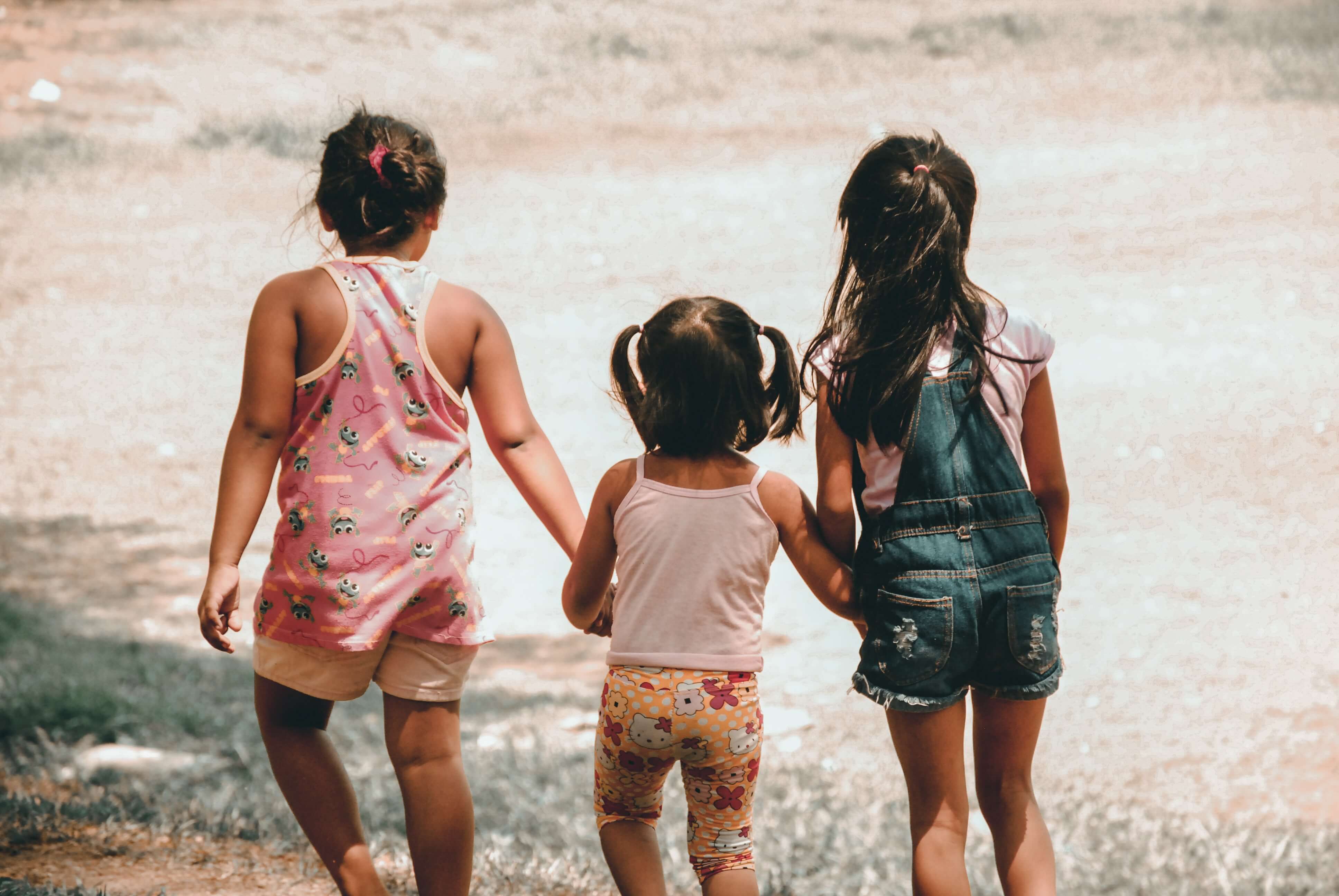
by Katie Raher, PhD
Here at Constant Love and Learning, we deeply believe in making the world a kinder place to be, feeling by feeling, breath by breath, connection by connection.
And we all know in the world of social-emotional learning (SEL) that there are many benefits to teaching children kindness.
But are we ever inadvertently teaching people pleasing?
In a recent conversation with my 10-year-old, I realized this might be the case.
This stopped me dead in my tracks.
While kindness is a core value and a pattern I want to pass down, I also want to make sure to never ever pass down people-pleasing patterns that so often get in the way of well-being for so many, as I witness in supporting educators with their well-being.
So, how do we differentiate genuine acts of kindness from people-pleasing? That’s what we’ll discuss throughout this article, with practical tips on teaching kindness without the downfalls of people pleasing.
How are kindness and people-pleasing different?
Kindness is a beautiful, powerful, and essential trait. It's the act of showing concern for the well-being of others, offering help, and extending empathy without expecting something in return. Kindness comes from a genuine place of love and a desire to bring that love to others and the world.
When children learn to be authentically kind, they contribute positively to their community, create a culture of care, and experience the joy of making others' lives better.
In contrast to kindness, people-pleasing involves going to great lengths to make others happy, often at the expense of one's own needs and boundaries. It often stems from a place of fear, such as from how one will be viewed or perceived by someone else. Ultimately, people-pleasing can lead to stress, anxiety, and a sense of martyrdom.
Encouraging people-pleasing behavior, even with the best intentions, can inadvertently foster patterns of self-sacrifice and emotional distress in children.
Sound familiar? This is a common pattern in the education field, where we’ve been conditioned to believe that’s what we should be doing.
Because so many educators and parents have conditioned people-pleasing tendencies, it's essential to unpack and heal these patterns ourselves (which Constant Love and Learning offers support for) and avoid passing down problematic people-pleasing beliefs when teaching children kindness.
How to Teach Children Kindness (Minus the People-Pleasing)
With a fine line between fostering the virtue of kindness and inadvertently encouraging people-pleasing tendencies, we must be more mindful of our messages when teaching kindness.

You can use these strategies when fostering authentic kindness in children:
- Teach boundaries
- Encourage self-compassion
- Focus on intent vs. impact
- Model authentic kindness
- Encourage reflection
1. Teach Boundaries
Boundaries are a key distinction between kindness and people-pleasing.
Kindness respects others' needs and one's own limits. Encourage children to be aware of their boundaries and to say "no" when necessary. Explain that it's perfectly acceptable to prioritize self-care while still being kind to others and that telling others no is okay when done in a respectful manner.
An example of this in action would be if one child asks another to play or work on an activity together. It’s okay to say no if they’re not feeling up to it.
And, yes, this lesson is for you too! Boundaries are clearly communicating your needs and where you need to draw the line, and as Brené Brown says, “clear is kind.”
2. Encourage Self-Compassion
Teach children that self-compassion is the foundation of genuine kindness. When they learn to be mindful of their feelings, connect to common humanity, and especially be kind to themselves, they can extend that kindness to others without resentment or self-sacrifice.
This is another lesson for all of us grown-ups, too! Remember, it’s a practice, and practice makes better.
3. Focus on Intent vs. Impact
Help children understand that kind actions should come from a place of empathy and good intentions. Emphasize that the impact of their actions on others is more important than mindlessly fulfilling others' requests.
Do you see a trend here? These lessons continue to be for us, along with the human-focused lessons we teach kids.
4. Model Authentic Kindness
Children learn by example. Model authentic kindness by practicing it in your interactions with them, others, and yourself.
Make meaningful efforts to show children how to balance caring for oneself while caring for others. Ultimately, this is key and why the lessons above are just as much (if not more) for us as for the kids.
5. Encourage Reflection
Invite children to reflect on their acts of kindness. Ask questions that build their self-awareness, like "How did you feel when you helped your friend?" and "What did you learn from this experience?"
These reflections can help them understand the intrinsic value of kindness and help them ensure they aren’t dropping into the resentment zone that comes when we cross over to people-pleasing.
You can, of course, consider similar questions yourself as part of making sure not to inadvertently pass down people-pleasing patterns.
Teaching Children Kindness Activities
Cultivating kindness is a work in progress for children and ourselves. You can use activities to support these efforts, make kindness fun, and further clarify kindness vs. people-pleasing.
Kindness activities for children include:
-
Using our World Kindness Week resources (which can be adapted for any time during the school year)
-
Reading books about kindness
-
Doing volunteer work
-
Playing cooperative games
-
Writing compliment or thank you notes
-
Learning about diversity
-
Celebrating other cultures
-
Answering kindness discussion prompts
-
Using SEL curriculum, such as Kimochis (our favorite SEL curriculum out there), to support kindness, connectedness, and belongingness (for those of you using the Kimochis SEL curriculum, Lovey Dove is a great character to explore kindness without people-pleasing)
Teaching Kindness vs. People-Pleasing: Final Thoughts
Ultimately, it's essential to teach children to authentically practice kindness while making the distinction between kindness vs. people-pleasing clear. With kindness, we care for others because we want to and don't expect anything in return. People-pleasing is doing for others at the expense of our own well-being.
Which of these strategies for teaching children kindness, and what other ones will you use to guide the kids you support toward a path of authentic and sustainable kindness?
My hope is that you can create a culture of care and kindness that teaches kids to also honor their own humanity while embodying that message yourself along the way. In doing so, we all become more equipped to create a more connected, compassionate world not only for others but also within each of us.
Grab a Free Self-Compassion Poster +
stay connected for Constant Love & Learning news and updates!
We won't ever share your info with anyone, and you can unsubscribe at any time.


